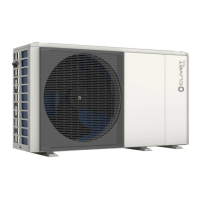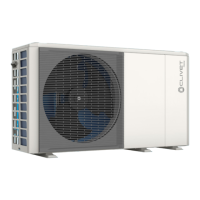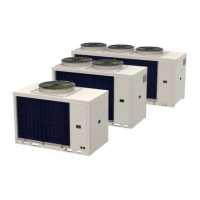
Do you have a question about the CLIVET WiSAN-YME 1 S 12.1 and is the answer not in the manual?
Guidelines for operating the unit safely and required protective equipment.
Conditions the installation site must meet for safe and optimal unit operation.
Guidelines and diagrams for standard unit placement and clearances.
Recommendations for installing the unit in areas exposed to strong winds.
Steps and considerations for securing the unit to the ground using anchor bolts.
Information on available kits and methods for mounting the unit on a wall.
Guidelines for connecting the unit to a Domestic Hot Water (DHW) storage tank.
Critical water quality parameters to prevent corrosion and ensure optimal performance.
Measures to prevent ice formation in the water circuit during low temperatures.
Guidance on selecting and using antifreeze liquids, including concentration tables.
Guidelines for ensuring adequate water volume and managing expansion tanks.
Procedure for filling the system with water and purging air before start-up.
Safety measures and compatibility checks before making electrical connections.
Specific instructions and precautions for connecting the unit to the power supply.
Configuration for smart grid and photovoltaic integration with the unit.
Explains the function of dip-switches for unit configuration and cascade settings.
Different methods for connecting and configuring zone thermostats for system control.
Information on connecting multiple units in a cascade system for enhanced performance.
Overview of the user interface, its access levels, and initial setup guidance.
Explanation of icons and symbols shown on the HMI for unit status.
Details on advanced functions accessible only by qualified technicians via password.
Configuration parameters for the Domestic Hot Water (DHW) operating mode.
Parameters for configuring the unit's cooling operation, including temperature curves.
Parameters for configuring the unit's heating operation, including temperature curves.
Configuration of the unit's automatic mode based on outdoor and indoor temperatures.
Options for controlling the unit via water supply temperature or room air temperature.
How to configure and use zone thermostats for managing heating/cooling requests.
Parameters for managing auxiliary heating sources like boilers or electric heaters.
Configuration for the Holiday Away mode to prevent freezing and save energy during absences.
How to use test modes to check the operation of various unit components.
Configuration for special functions like floor preheating and drying cycles.
Parameters for setting up units in a cascade configuration for expanded capacity.
Selecting and configuring climate curves to adjust water temperature based on outdoor conditions.
Steps for connecting the unit to a Wi-Fi network for remote management via a mobile app.
Describes the function of each button on the user interface keypad.
Steps for selecting the operating mode (Heat, Cool, Auto) via the HMI.
Functions related to domestic hot water production, including Disinfect and Fast DHW.
Setting daily schedules for unit operation modes, times, and temperatures.
Displaying and interpreting error codes for diagnosing malfunctions or protection events.
List of error codes, their descriptions, and corresponding MODBUS codes for troubleshooting.
Troubleshooting scenarios for switching between DHW and heating modes, and low room temperature.
Additional error codes for compressor inverter, voltage, speed, and phase sequence faults.











